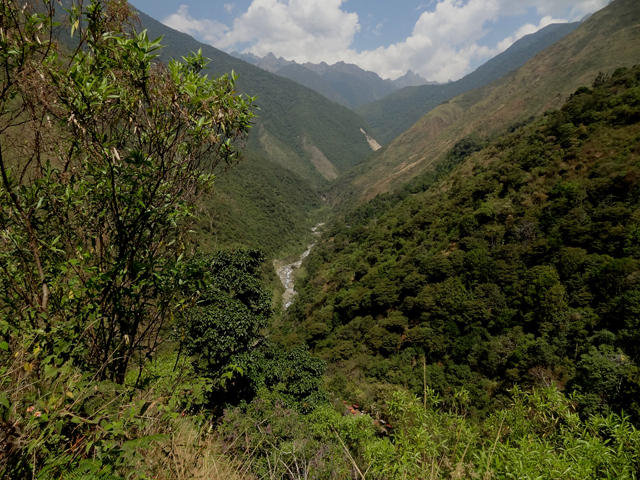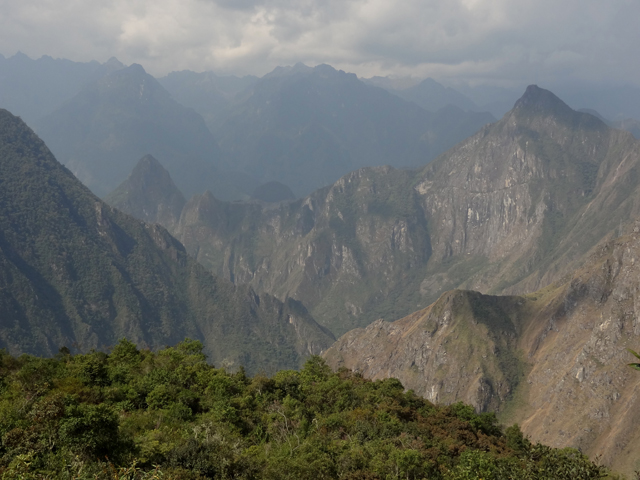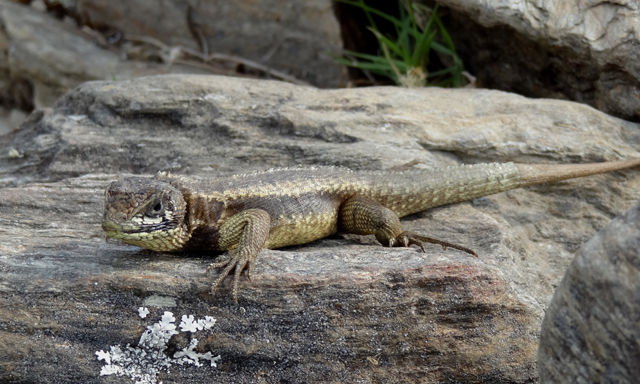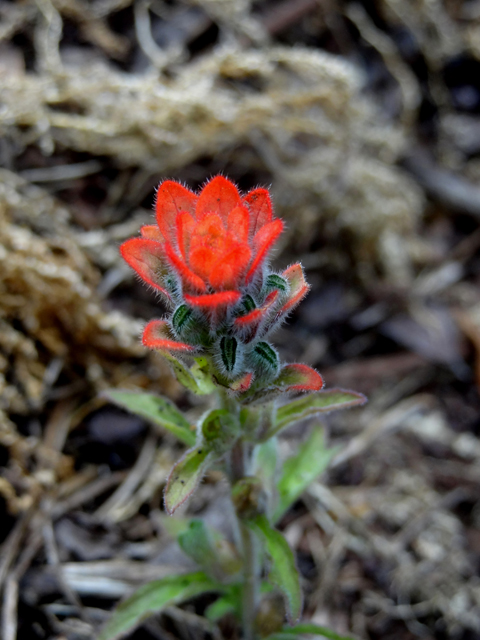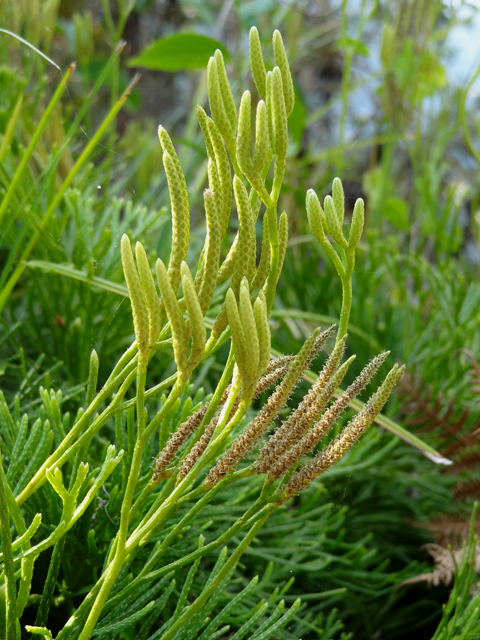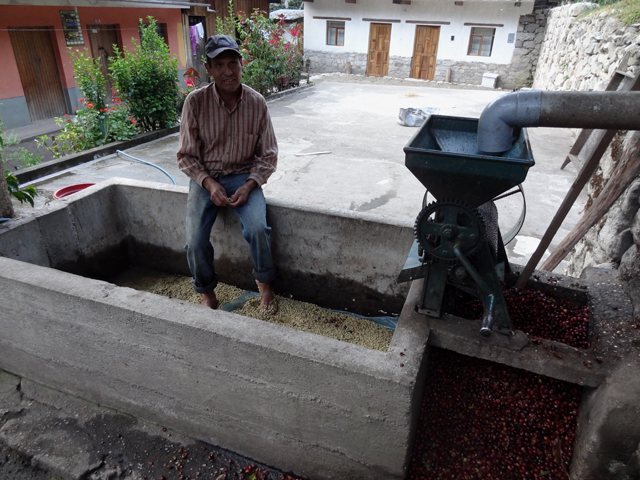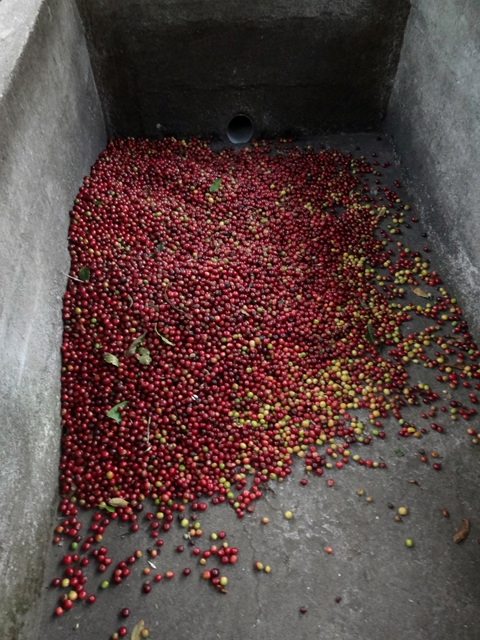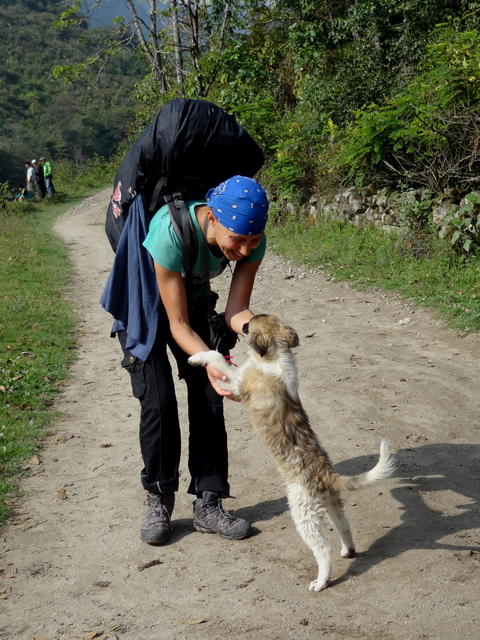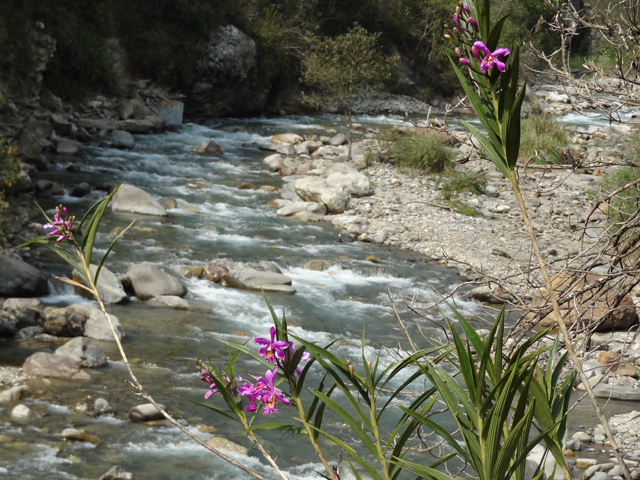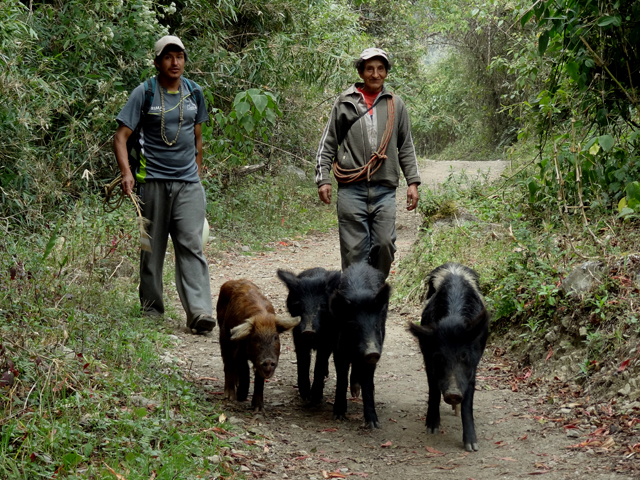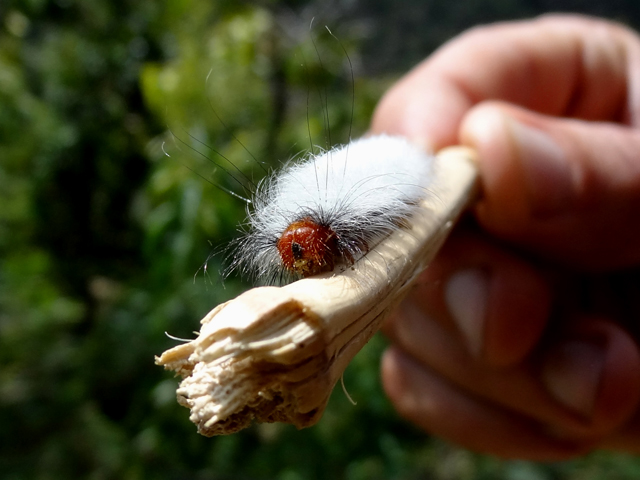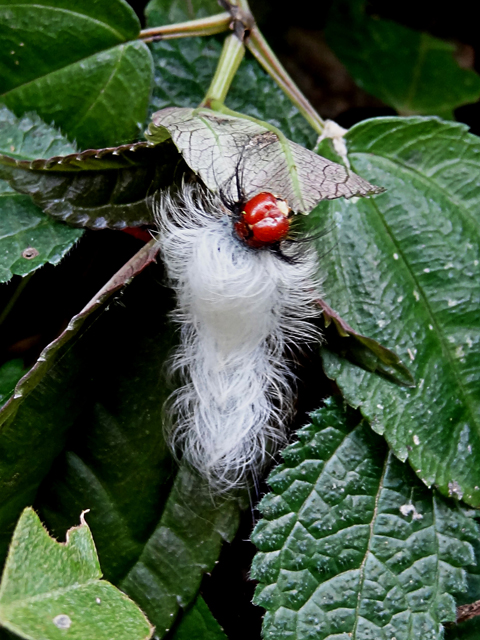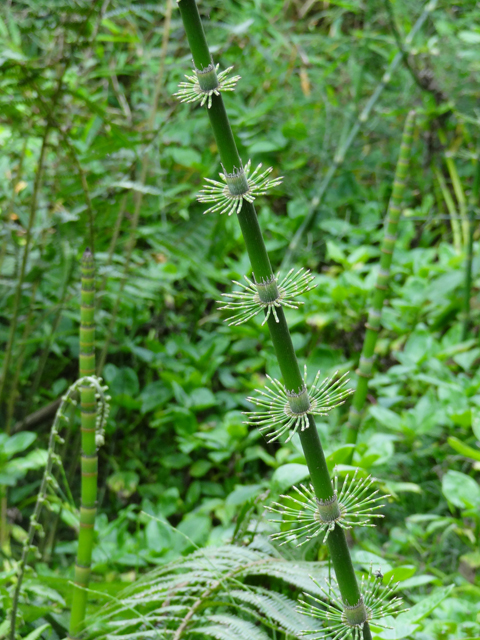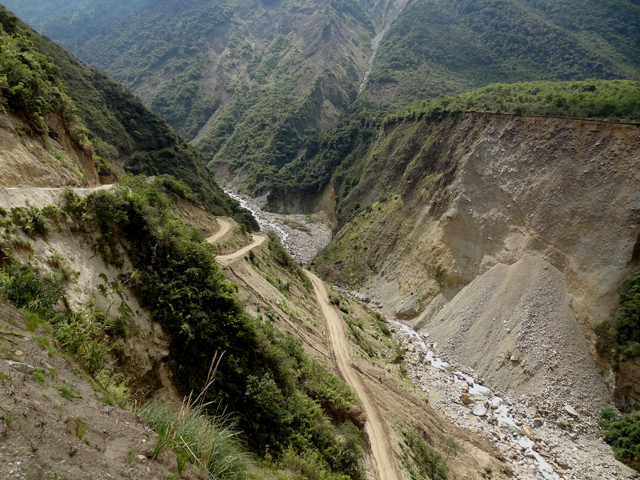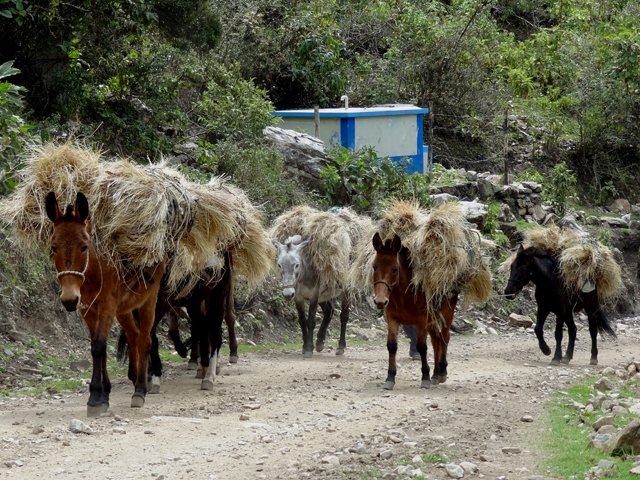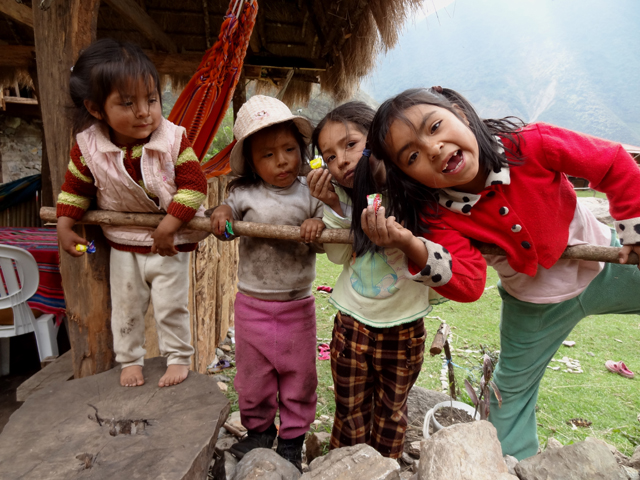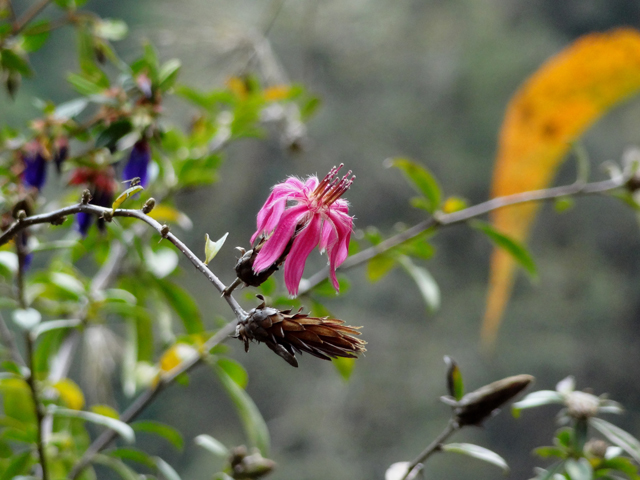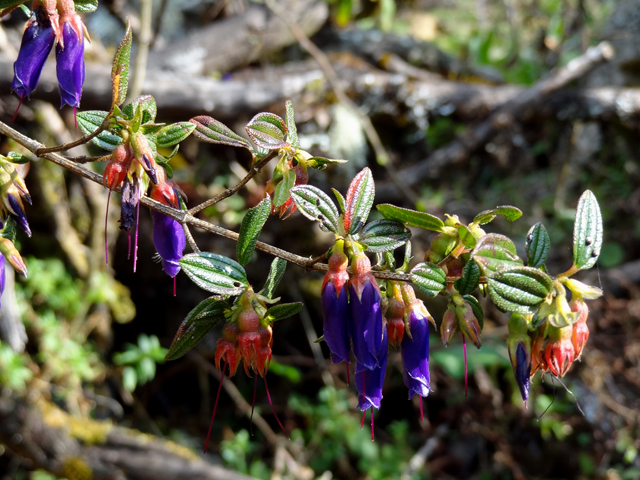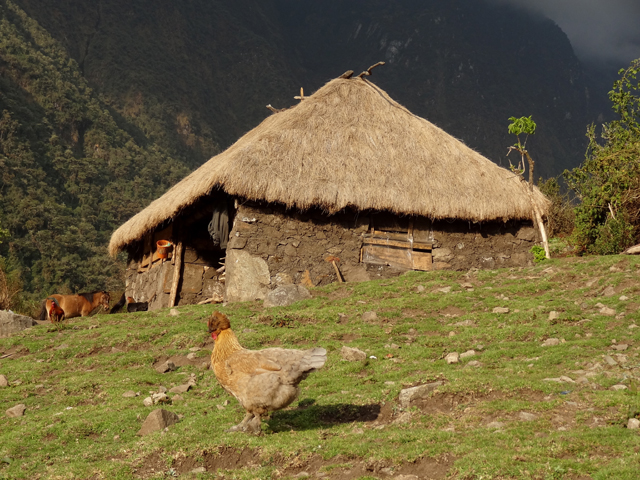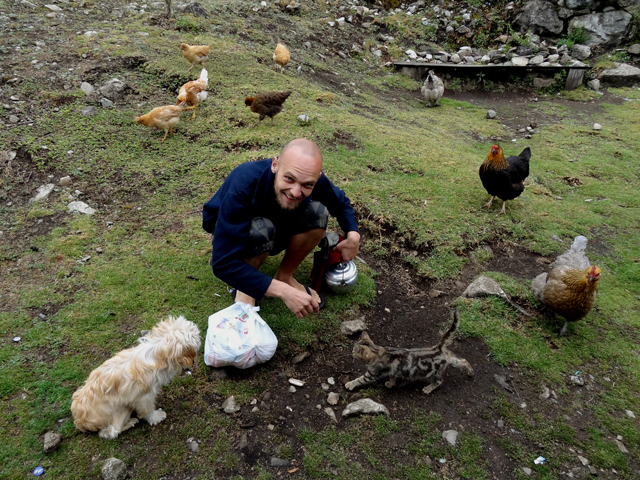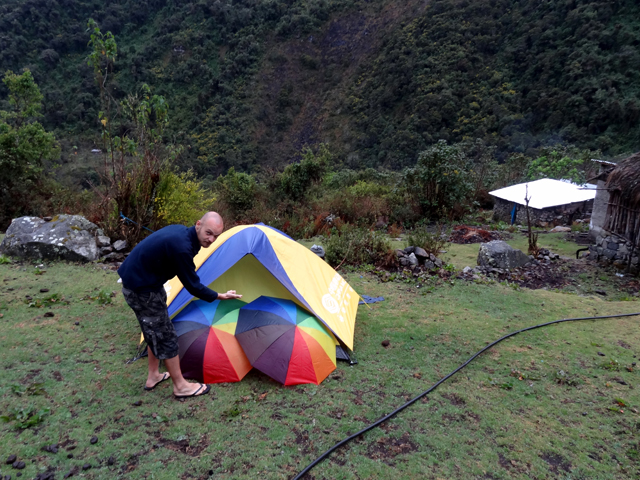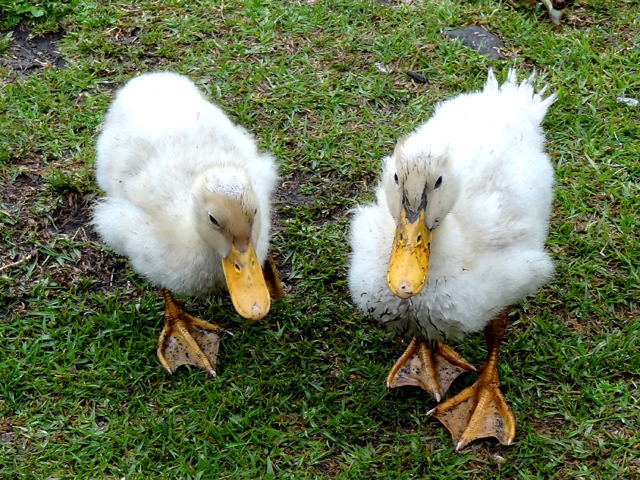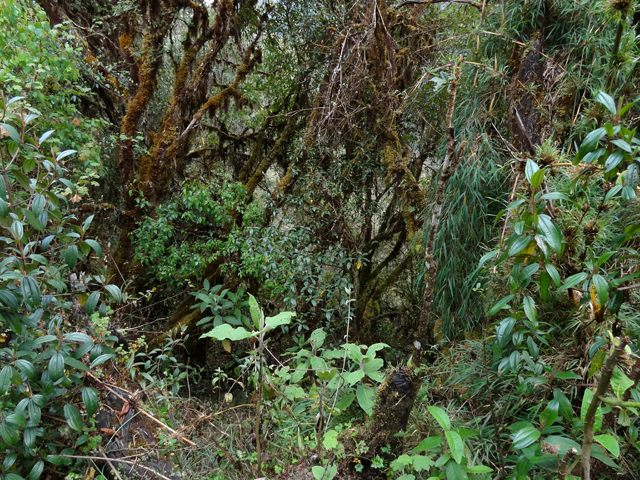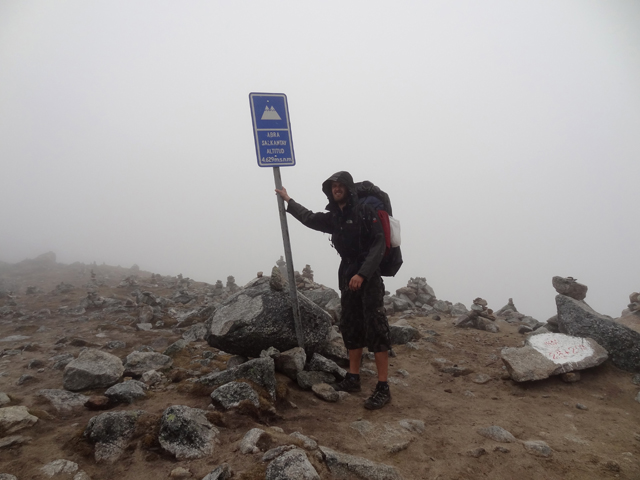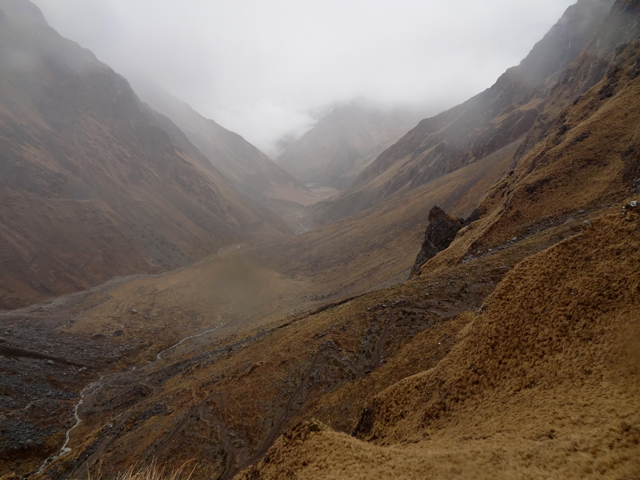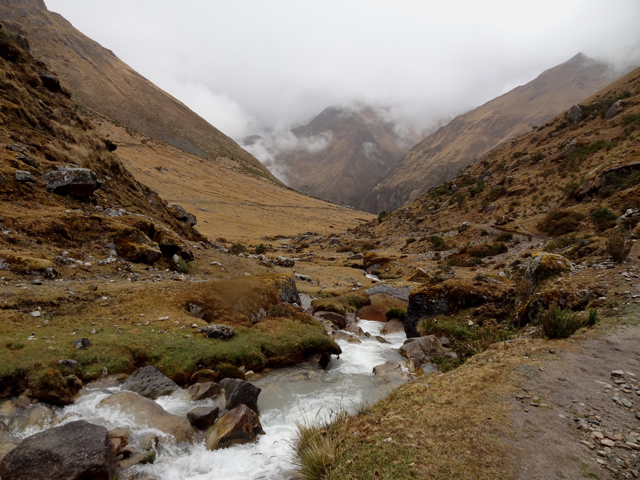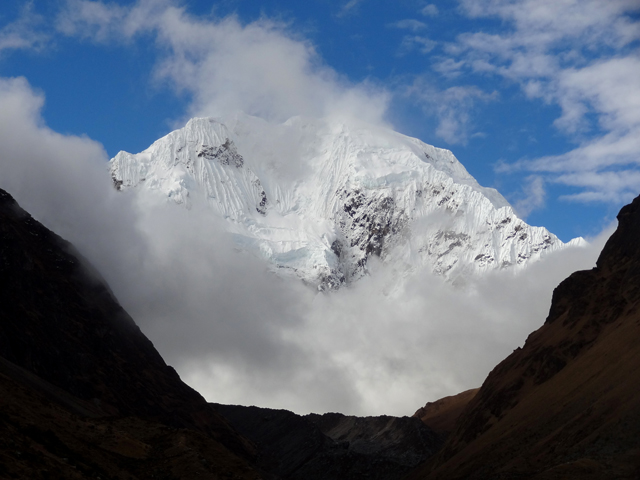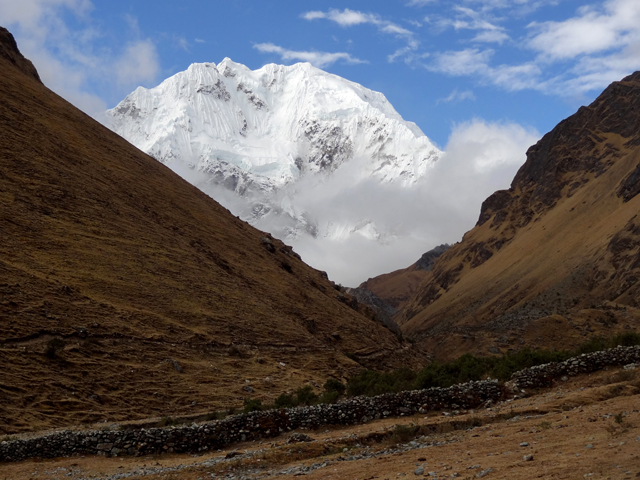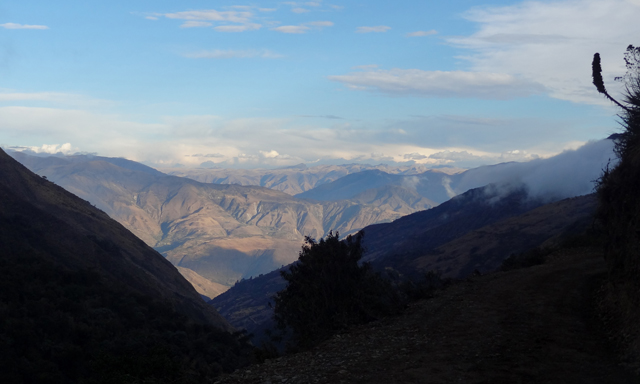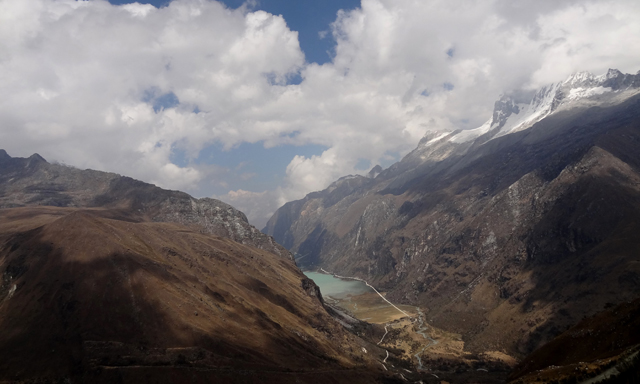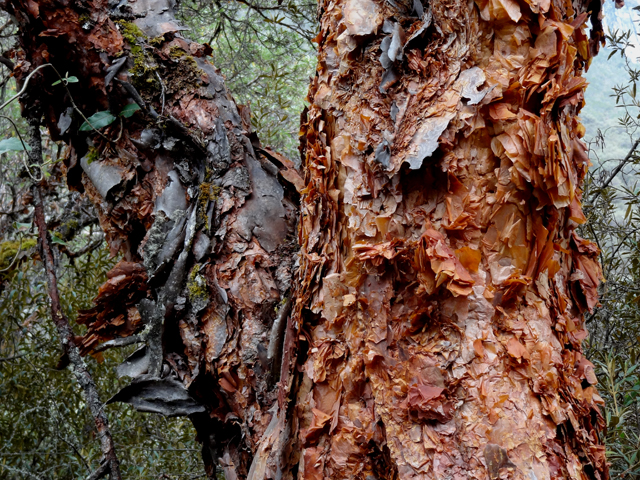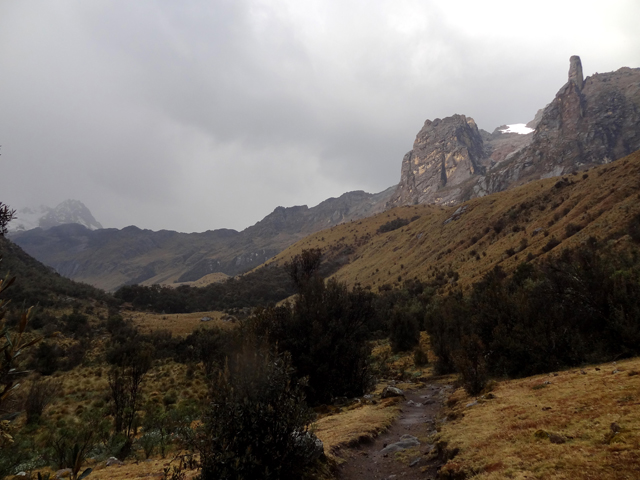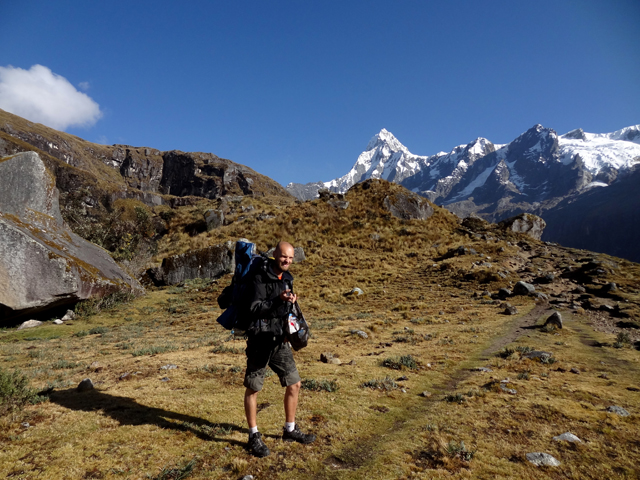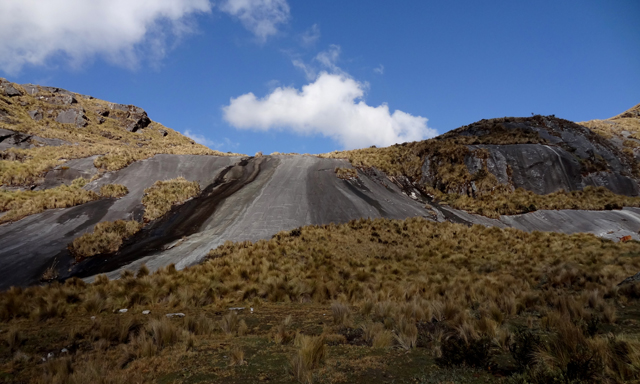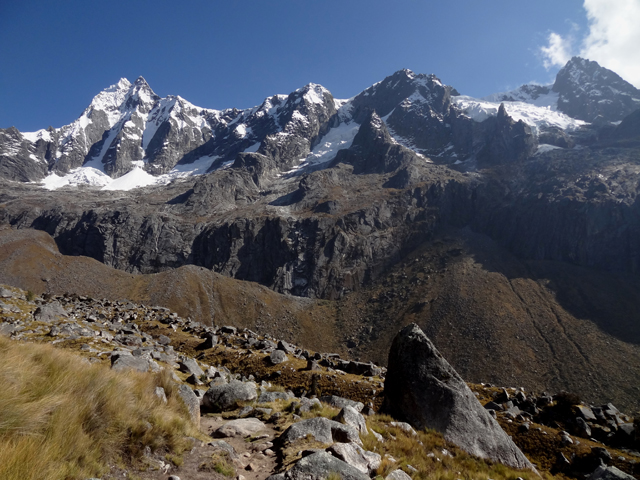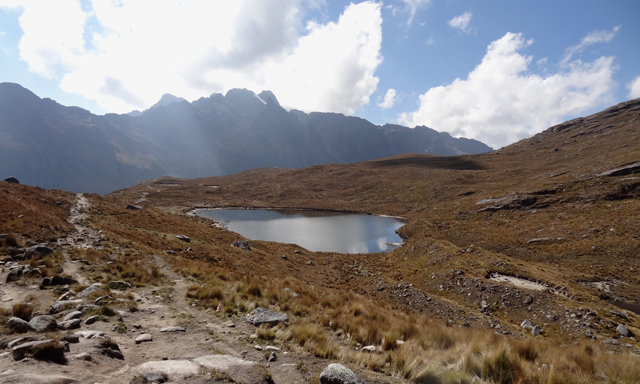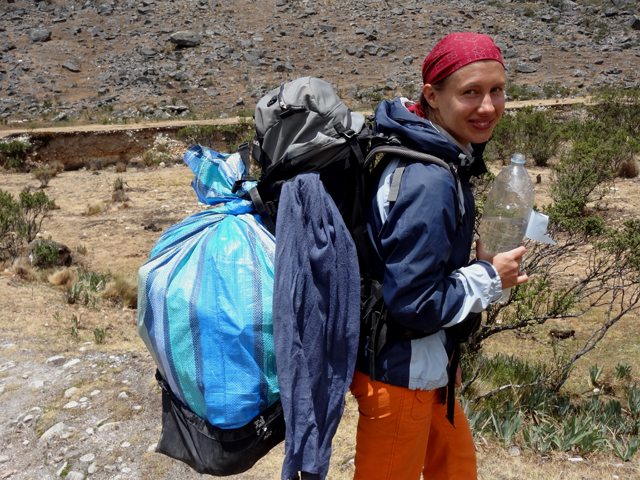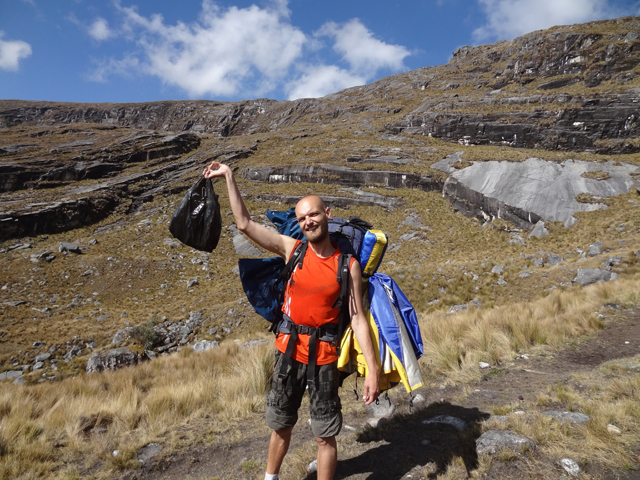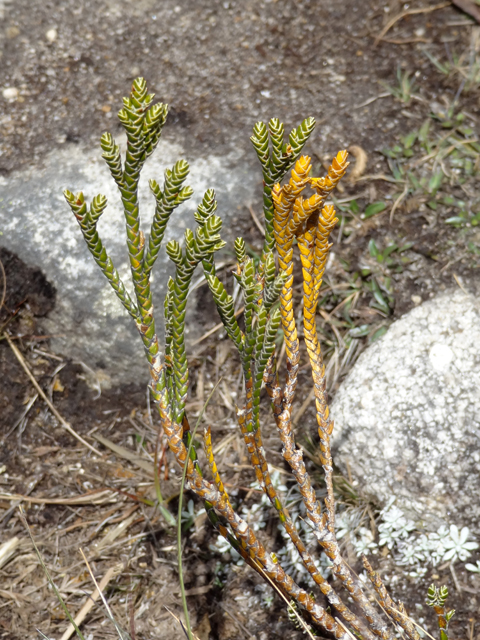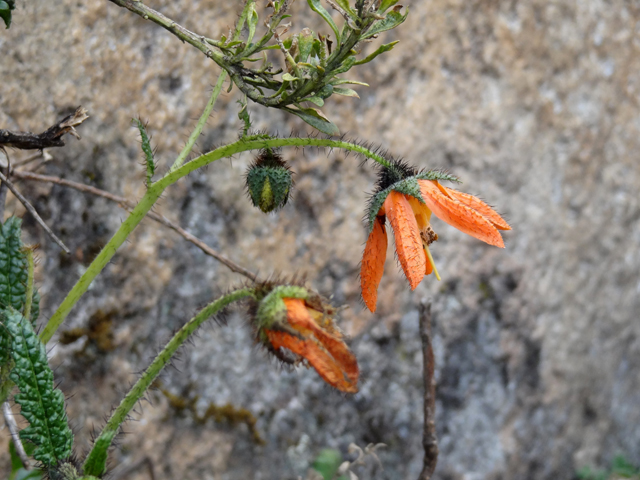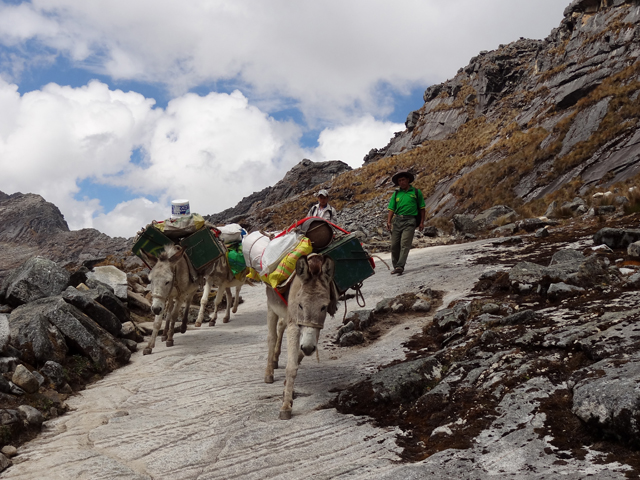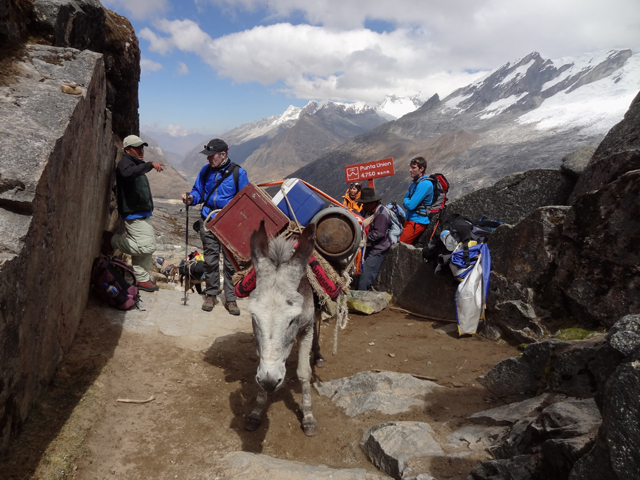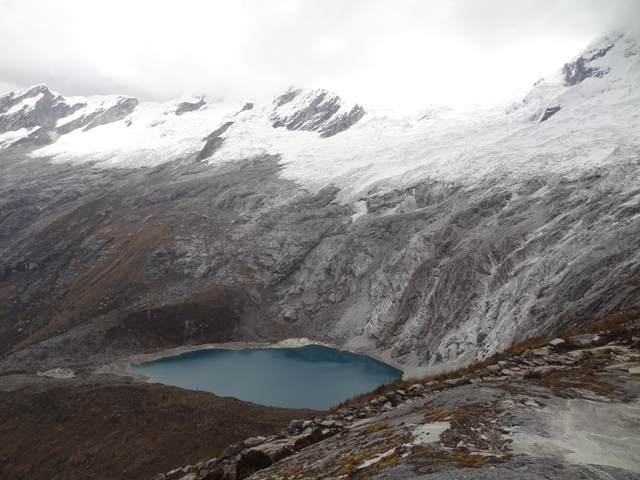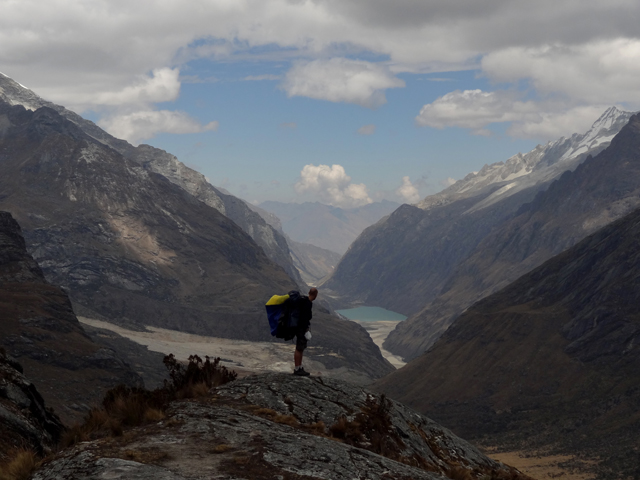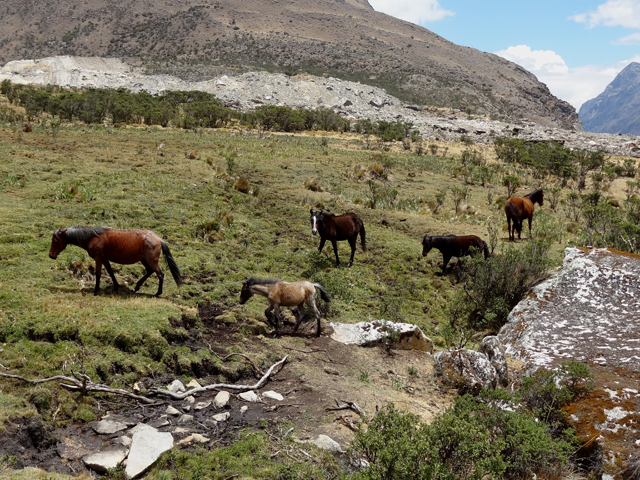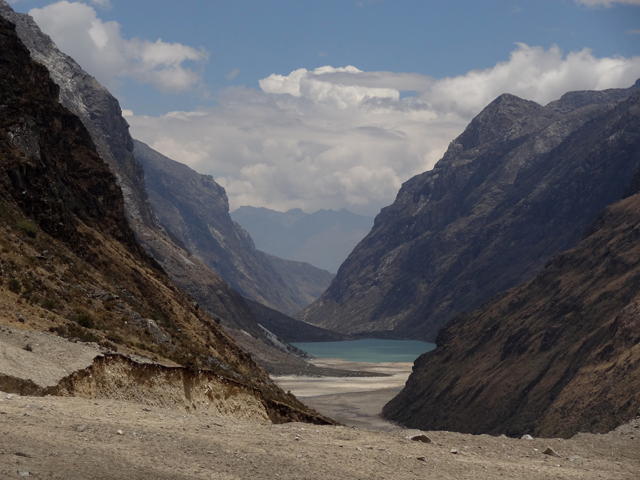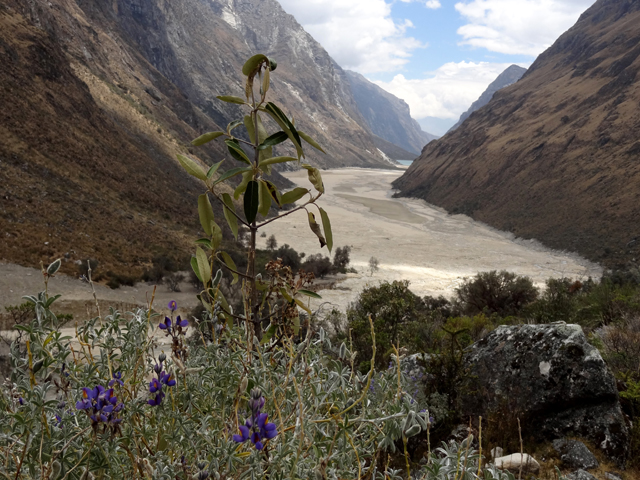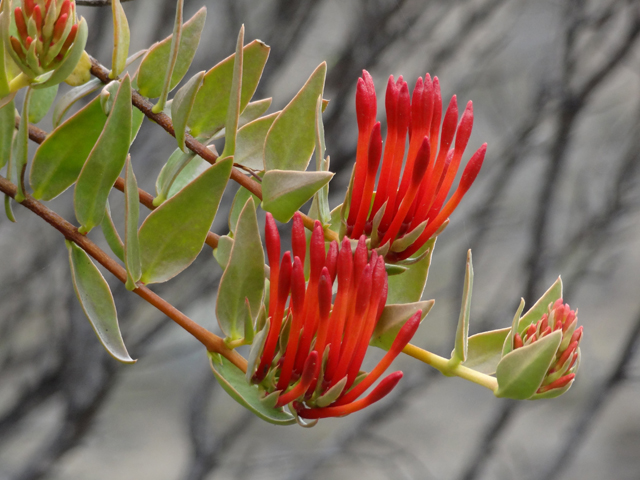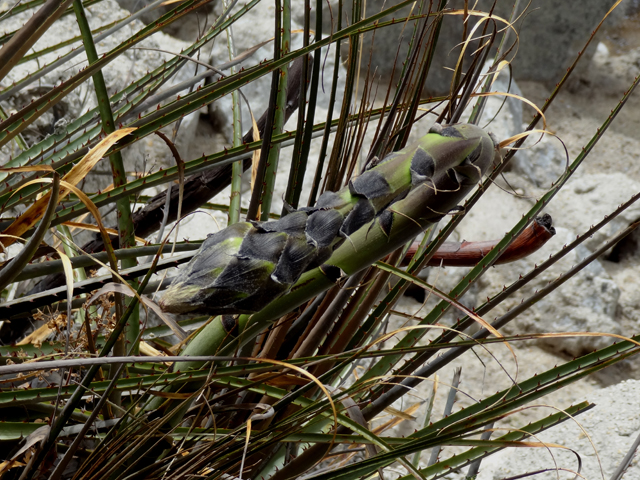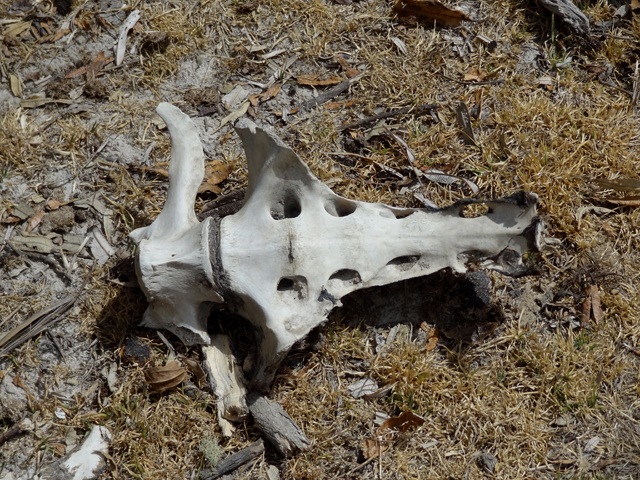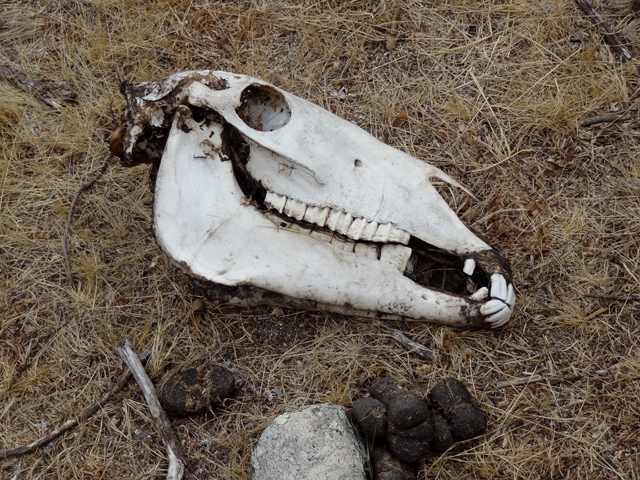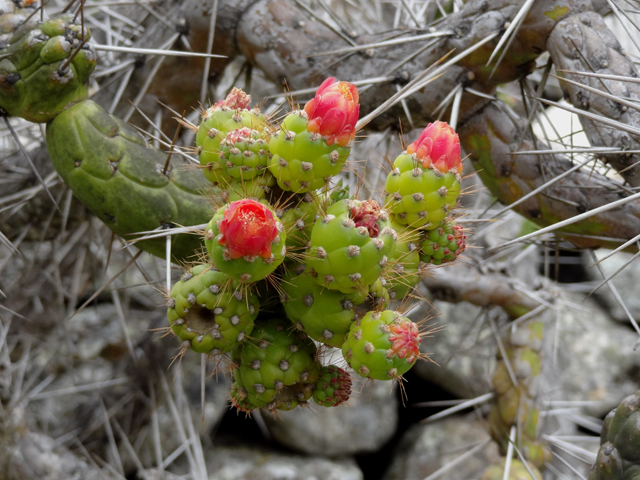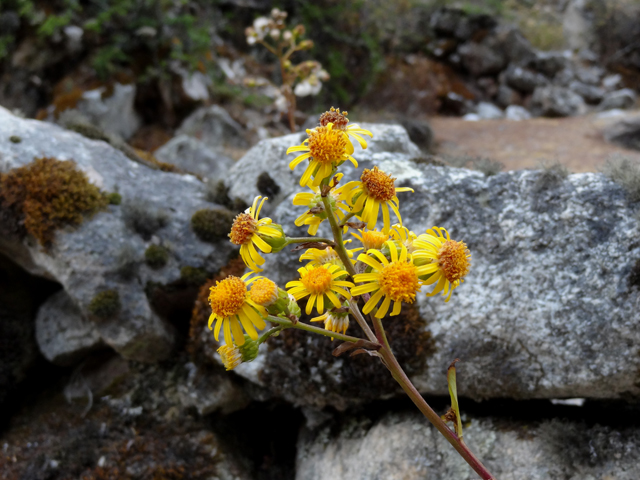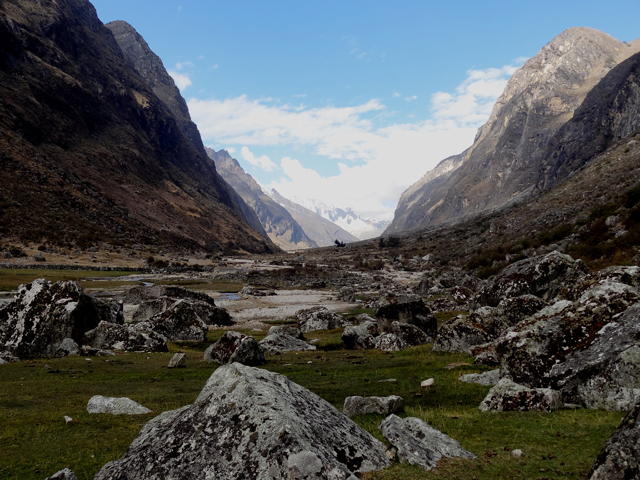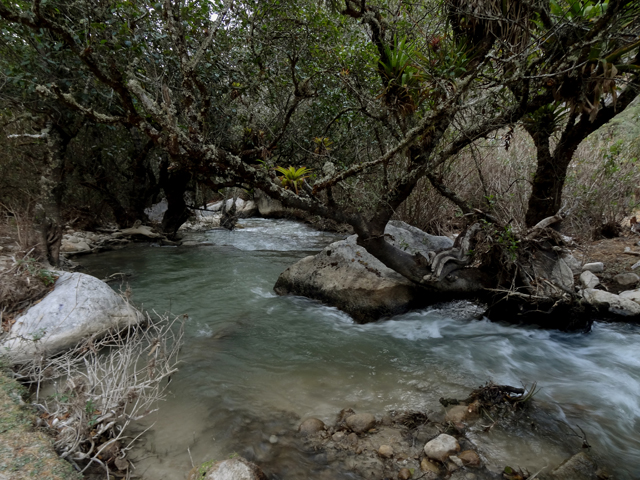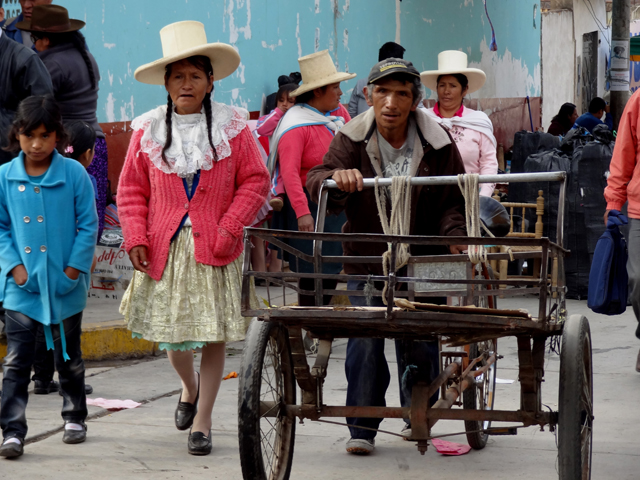Peru - Salkantay and Santa Cruz treks
This post is dedicated to two of the most popular treks in Peru - Salkantay (an alternative to the overpriced "main" Inca Trail) and Santa Cruz (a gorgeous range in the Cordillera Blanca). We trekked both trails independently (as we always do) - below is a short account of them.
Salkantay trek:
The next day after our visit to Machu Picchu we started the 3-day Salkantay trek which we did in the direction reverse to the usual one. And while doing it according to the normal route which starts at the village of Mollepata and finishes in Machu Picchu and contains about 2km of altitude gain and 4km of altitude loss is definitely easier, we decided to do it this way (with correspondingly reverse - and less favourable - proportion of ascending and descending) in order not to risk the 50 euro Machu Picchu entrance fee which we'd lose due to a late arrival from the trek in case of some force major.
And here's a quick outline of this trek:
Day 1: Aguas Calientes - Hidro-Electrica (2 hours, flat). We once again followed the route along the railway which we took to get to Aguas Calientes.
Hidro-Electrica - Llactapata (3 hours, up). In this stretch we had to ask a few locals to find the beginning of the trail - as it turned out it passes next to the river, on the left side of it (if you walk from Hidro-Electrica) and starts right next to the big waterfall continuing all the way along the river to a hanging bridge from where it starts climbing up. On the way up we bought some honey at a solitary hut from a charming woman, hiked for a short while with some horses that were going home to their owners from a free-grazing session and had a rest at the spectacular camping site a few minutes before the Llactapata ruins from where we could once again bid farewell to Machu Picchu.
Llactapata - Lucmabamba (1 hour, down). The highlights of this stretch were the village of Lucmabamba with coffee plantations and lemon trees and a brief encounter with a fascinating ancient lady guarded by two giant turkeys.
Lucmabamba - Sahuayaco, or La Playa (1 hour, down). This was quite a boring stretch at the end of which we reached our destination for the first day. On arriving at La Playa we were greeted by a guy who runs a camping site and put up our tent on his huge and well-maintained lawn, next to a few agency tents, set up by the group's porters for the tourists which at the time of our arrival were watching a football match while having their huge dinners served by the agency cook.
The waterfall at the beginning of the trail:
The view at the Machu Picchu city from the camping site before Llactapata ruins (you'd have to zoom in to see it):
Llactapata ruins:
Just some of the plants along the way:
A local guy processing the raw coffee beans:
Day 2: La Playa - Lluscamayo (1 hour 40 minutes, up). The highlight of this stretch was passing by a lot of boisterous turkeys when we were leaving La Playa village.
Lluscamayo - Winaypoco (45 minutes, up). The highlight of this part was watching a brave local cross the river valley in a tiny cart attached to a wire by manually pulling the cart over the river a couple hundred metres below.
Winaypoco - Collpapampa (2.5 hours, up). This was a boring stretch during which we trekked along the same river and could see the road on the other side the whole time. At some point we reached a bridge where the road finally joined the path and then continued up via the road to the village of Collpapampa.
Collpapampa - the ruins of Los Andenes (1 hour 45 minutes, up). After we crossed a hanging bridge over the river, it was an unadventurous but tiring hike up till the tiny and definitely not spectacular ruins of Los Andenes (hadn't they been marked by a board we probably wouldn't have even known those were ruins and not remnants of some old camping spot).
Los Andenes - Rayampata (0.5 hour, up). It was another unadventurous stretch till we reached the Rayampata village which consisted of one household owned by a very silent hermit and where we decided to stay for the night. We discovered very fast that the hermit owned a few dozen of animals that included ducks, pigs, horses, mules, cats, dogs and a whole litter of newly born puppies whose mum together with the other dogs and cats kept begging us for food. (Because we had so little to spare we felt lucky the hermit didn't have elephants or hippos as pets.) Also that day went down in our personal history as the day we (unsuccessfully) tried to solve the "Who stole the plastic bag with the lighter and matches" detective story, with the main suspects being the pigs who roamed around our tent throughout the entire evening, but since the dogs also looked pretty guilty we never established the identity of the culprit, especially since we didn't have any tools to carry out a proper forensic analysis :-). So while we are inclined to think it was the pigs, we never really figured out how within half an hour during which we were drinking the tea inside the tent waiting for our portable stove to cool down for packing, the plastic bag that was right next to it disappeared without a trace and ended up (as we discovered the next morning) in the trees about 50 metres away from the tent.
At the village of La Playa:
The route passes most of the day along the river, parallel to the road which (sadly) can bring you all the way from Hidro-Electrica to Llucmapampa in a matter of probably a couple of hours:
The trail was full of these furry white caterpillars:
Approaching the bridge a short stretch away from Llucmapampa (at the bridge we had to guess which way to continue but guessed rightly that it was following the road to the right and up):
The road finishes in Llucmapampa so donkeys and mules become the only available means for transporting the goods:
The donkey convoy crossing the river:
Kids at a camping site right after the hanging bridge:
Flowers along the way:
At the village of Rayampata - our camping spot for Day 2:
Day 3: Rayampata - Huayracmachay (1.5 hours, up). As we were leaving in the morning to start the last day's hike, the silent hermit was saddling his mules to pick up the tourists' stuff at Soraypampa (which we guessed was his day job). We tried to keep up with his convoy of three men (confidently led by the youngest of them - a little boy) but after a while lost them because of all the photo stops.
Huayracmachay - El Paso (the Salkantay Pass) (2 hours, up). This part of the trail was full of huge rocks so it was a little bit more difficult to walk than in the other parts. It was also very foggy and raining so we were happy when we finally reached the 4600m pass. Due to the altitude the rain droplets turned into icicles and we couldn't see any peaks through the heavy fog, so we didn't linger at the pass and after taking a couple of photos started walking down to Soraypampa.
El Paso - Soraypampa (2 hours, down). After we crossed the pass it started raining very heavily so very soon our trousers got completely wet. Luckily once we reached the beautiful valley of the Soraypampa village the rain stopped and we could dry a bit during a long lunch break. And then we had even more luck as during our long break the clouds around the Salkantay mountain cleared up and as we were leaving all of a sudden we looked around and finally saw the star attraction of this trek - the magnificent sight of the completely white Salkantay mountain rising up to the sky out of its brown mountains frame!
Soraypampa - Cusco (1 hour walking, down + 3 hours driving). At Soraypampa we were supposed to be a couple of villages and something like 4 hours walk away from Mollepata - the official end of the trek, but it turned out that by now the road had reached the Soraypampa village, so half an hour after we started walking a tourist minivan that was delivering some equipment for the next day's trek at Soraypampa stopped and the guys asked us if we were going to Cusco. And while our farthest ambition for that day was the village of Sayllapata (a couple of hours away from Soraypampa), the tourist minivan guys offered to deliver us in Cusco for a normal price of a "collectivo" (public transport minivan), so about 3 hours later we were back in Cusco where we found a hotel, had dinner at the nearby Chifa (a name for a Chinese restaurant in Peru that serves giant portions of fried rice) and fell asleep like babies now that we finally had a bed instead of a sleeping bag.
Rayampata to Huayracmachay:
Huayracmachay to El Paso:
El Paso - the Salkantay Pass (4600m):
El Paso to Soraypampa:
Mountain Salkantay:
The last views along the trail, on the way from Soraypampa to Mollepata:
A couple of general conclusions about the Salkantay trek:
If you have limited time in Peru, definitely skip it, as it's quite disappointing to realize that most of the places along the trail can be reached by road (except for the Llucmapampa to Soraypampa stretch there is a road between all the villages along the trail which means that there's no virgin feel and look to it whatsoever). The only really memorable parts of this trek were the sight of Machu Picchu from a camping site close to Llactapata at the very beginning of the trek and the Salkantay mountain itself at the very end, but both can be done as day hikes from Hidro-Electrica and Soraypampa correspondingly, and while the former can also be skipped since it will be only one more (out of hundreds) of sights you will have had of Machu Picchu, the latter is quite striking but can be done as a day trip from Cusco. But of course, if you have plenty of time any trek is always a great experience.
Santa Cruz trek:
Another trek we did in Peru was in the Santa Cruz range of the gorgeous Cordillera Blanca, near Huaraz. Below is an account of how we arranged it, the small war we had with the SERNAP organization, how we turned this trek into a personal trail cleaning mission and how the trek turned out to be in general.
A visit to the SERNAP office (the organization in charge of national parks) was pretty useless as the lady manager there simply recited a line from the law we were already familiar with - that no-one is allowed to trek in the Santa Cruz National Park without a guide (= an expensive agency package). After some hesitation we decided to take our chances and bought food and a huge piece of plastic (rain fortification for our primitive "China Telecom" tent) and the next day left for the trek. And while the agencies do it in 4 days (we asked around since we needed information and a map), it took us only a day and a half to complete it. Here's a short summary of how the trek went:
Day 1: We took a 5-hour bus from >Huaraz to the village of Vaqueria which stopped a couple of hours before our destination at a place that claimed to be an entry to the National Park where a rude guard got on the bus and pointing at me and Jordi shouted "Tu y tu" ("You and you") thus implying that we had to get off the bus to pay the entrance fee. Now here's where it all got very interesting. The official rates posted on a huge board listed two types of fees - 5 soles for a day visit to the park and 65 soles (about 30 euro) for the so-called adventure visit. A printout of regulations which we asked the guard to show us didn't mention anything about locals being exempt from the entrance fee and yet we were alone in his office with the rest of the passengers from our bus simply waiting for the guard to charge us. Having had enough of such outright foreigner discrimination back at the Colca Canyon, this time we decided to refuse to be treated as stupid moneybags. We told the guy we had no ambition of doing any adventure activities in the park and that we'd only pay the day ticket (the price of which was more of a fare fee for a trail which we knew wouldn't have a single indication board along the trail or any other type of infrastructure which would show that at least some of the money goes into maintaining the trail, the park and/or local communities).
Now here's where I should make a short detour to explain the background of this conflict. The problem with travelling Peru as a foreigner is that whatever place you want to visit, you'll be charged something between 20-50 euro to access it. In return for all this money you will get exactly nothing: no maps, no information, no directions boards (not even one to mark the beginning of trekking trails), the trails will be littered with plastic (not to the extent of India but unacceptable in view of the high ticket prices), and if there are any toilets at all you will have to pay for them since they are private! The only thing you'll have in return for your money is two-three guys who'll relieve you of your cash somewhere before you even reach the place (this way they don't even have to invest in a ticket booth). Judging by all this, the whole SERNAP thing stinks too much of corruption, as the local communities you'll pass on your trek will be as poor as they must have always been, so they definitely don't see any of the tourists' money. The only thing you'll see in and around tourist destinations are empty stadiums (sometimes built in villages of a couple of dozens inhabitants) and locked children's playgrounds (particularly numerous in Cusco), all of which seem to be a miserable pittance from the government to the local communities. After 2.5 years of travelling we were already pretty used to the fact that there is always a little bit of foreigner price discrimination around the world, but usually it was a difference of at most 50% between locals and foreigners, and always over insignificantly low prices. Peru on the other hand was the first and so far the only country where we discovered a totally new level of foreigner price discrimination: with foreigners most probably considered stupid and loaded moneybags, both Peruvian government and local communities seem to have lost an ability to control natural human greed, so irregardless of where you go you'll be obliged to pay really high fees. Colca Canyon which wasn't even a national park was our first encounter with this shameless discrimination and after that we promised to ourselves never to pay any more money for simply walking through a part of the Earth that we believe belongs to all Earthians rather than just Peruvian people, unless the Peruvians take proper care of it or invest the money into something worthwhile. And by worthwhile we don't mean a couple of corrupted guys building huge houses, buying expensive cars and sending their kids to get an MBA in the States... The Santa Cruz park was our first and last chance to express protest against foreigner discrimination in Peru, so we firmly stood our ground with the rude guard as he demanded that we pay the adventure ticket. After about 10 minutes the bus driver was anxious to leave and since the guy hadn't made any progress he ordered the driver to offload our luggage to which the driver responded that he was free to do it himself. We got back on the bus which was only half way through to our destination, and the guard had nothing to do but charge us the day ticket. First battle was won, but we knew it wasn't the last one.
From the first checkpoint we drove for another couple of hours passing two very beautiful Llanganuco lagoons, then the bus slowly climbed over a high Portacuelo pass, and finally we arrived at the village of Vaqueria which was the beginning of our trek. Our next battle with a SERNAP soldier was at the second checkpoint (there were three in total, with the last one at the other side of the trail), right after the Colcabamba village which was about half-an-hour walk from Vaqueria. This time the discussion was a bit longer as we listed all our arguments for not wanting to pay the adventure ticket: that the price was unfair since we knew we wouldn't find any indications in unclear parts of the trail, neither would the trail be clean (by that time we'd already seen quite a few plastic bottles) and how it was pure discrimination since only foreigners had to pay the entry while it was usually locals leaving rubbish on the trail. We also mentioned that according to legal technicalities, we'd paid a day ticket and had the right to remain in the park for 24 hours, and since there was no definition of "adventure" on the backside of the ticket (= our contract) this legal ambiguity served the party that didn't draft the contract - in this case us. Anyway, we had our honest reasons not to pay, and while this second guard was quite pushy in the beginning he seemed to only be worried about the fact that he'd mistakenly stamped our day tickets, so we let him cross out the stamps, and confidently went on. Battle number two was also won...
The rest of the hike that day we were a little bit agitated because of all the arguing but the sight of the bright red Qiñua trees which looked strangely alive because of their peeling bark of multiple layers, and the snowcapped peaks and green meadows all around us gradually brought peace to our disturbed souls. Another thing that was strengthening that peace of mind was the fact that we finally decided to do what we'd always wanted to do: clean an entire trail. It had occurred to us before on numerous treks around the world that they had a lot of plastic rubbish and that it always looked like it would be quite a simple mission to clean them from waste while trekking. This time as a kind of personal statement against the corrupted SERNAP we decided to do it so we attached a plastic bag of 50kg capacity (one of those amazingly enduring Chinese woven plastic bags) to my bag and started our Santa Cruz rubbish collecting.
The Santa Cruz trek is done by the agencies in 4 days and in either of the directions (depends on the agency). It passes by the mountain peaks in the Santa Cruz range, with the Punta Union pass being the transition point from one side of the range to the other. So no matter what side you start the trek from, you'll first go all the way up to the pass, and then all the way down. So during the first day we decided to get as close to the pass as possible. At around 5pm we reached an awesome camping spot with huge rocks scattered all around a cosy meadow and gorgeous views of the mountains (including a terrific view at the Taulliraju peak) on all four sides. The only drawback was absence of water, so we had to go down to the river (about half-an-hour round trip) to fetch some. Since it looked and smelt very much like rain, we water-proofed our tent with the extra 9 square metres piece of plastic that we'd bought in Huaraz for 3 euro and the moment we finished doing it, it started to rain really hard in tough icicles.
A view at the Llanganuco lagoons from the bus:
A view at the lagoons from the Portacuelo pass:
Qiñua trees:
Views in the Huaripampa valley:
Our camping spot right beneath Nevado Taulliraju (on the opposite side from the photo view):
Day 2: It was raining the whole night but our tent remained completely dry thanks to the cheap piece of plastic we bought in Huaraz (albeit with a layer of ice on the outside surface from condensation), but the sky was clear when we woke up the next day which was a real stroke of luck, taking into account the forecast and the fact that it was the beginning of the rain season. After scrubbing the tent of ice and drying it as much as we had time for, we started our second (and last) trekking day. By that time it was really sunny and we could see the Taulliraju peak in front of us in all its glory. It took us 2.5 hours to complete the ascent to the Punta Union pass (which with 3-4 hours of walking on the previous day was about 5-6 hours from Vaqueria in total). On the pass we found a tourist group (the only one we met that day) coming from the other side, although before any people we first saw all their heavily loaded donkeys slipping on the rocks of the steep path down. Once the group moved on to the other side of the pass, we took some more time to take in the breathtaking view of the turquoise lagoon right next to it and the Jatuncocha and Ichiccocha lagoon far ahead of us, which looked like a symmetric reflection of the Llanganuco lagoons we saw on the other side of the range on entering the national park except that the bigger lagoon was completely dry. The sweet picnic spot right below the pass provided a generous contribution of plastic bottles, cans and baby wipes to our rubbish collection bag, so by the time we started walking down on the other side of the pass, I started looking like Santa Clause going to meet some kids with a huge bag of presents.
Most of the walk down was along the Santa Cruz river. In about 1 hour after the pass we found the Taullipampa camping site which the agencies use on their second day. Then for a couple of hours we trekked through the Santa Cruz valley that gradually changed from brown to green as we kept losing altitude. In the green part we found a lot of free-grazing horses and a view at the snowcapped Alpamayo peak. At the end of the green valley we finally reached the dry Jatuncocha lagoon that we saw from the pass. We took another hour to pass it (walking through the sand was more difficult than on the rest of the trail), then another hour past the green Ichiccocha lagoon and another one past the Quebrada Santa Cruz to the village of Llamacoral (so 5 hours in total from the pass). And while the main attraction of the previous day was the mysterious scenery of the foggy Qiñua forest, vast meadows and the view of snowcapped peaks, this second day was mostly about green ranges, the Jatuncocha lagoon, some waterfalls, various exotic plants and the sight of the bright green river happily babbling next to us over huge white rocks. The only thing that disturbed all this harmony was the sight of the destruction caused by a major avalanche in the Santa Cruz valley that happened in March 2012 and left behind an ugly scar on the mountain slope it came from.
While Llamacoral is the official camping spot for the third day of the Santa Cruz trek, since we still had a few daylight hours for our second trekking day we decided to attempt to finish the whole trek, although according to our calculation (based on our personal formula where 3 hours on the agency map equal 2 hours on ours), we'd arrive something like half an hour after dark. This estimation turned out to be pretty accurate and after walking for what seemed like an eternity through the canyon where the path started to have patches of landslides, we finally arrived at the village of Cashapampa at about 7pm, having walked the last half-an-hour stretch of the trek with headlamps. Such a late arrival had one definite advantage - skipping the argument with the last SERNAP soldier who had long been gone, although with our Christmas bag of rubbish completely full by then we felt that our arguments were a few kilos of plastic waste heavier than before, so that last discussion would have been a piece of cake.
Day 2: starting to hike from our camping site to Punta Union pass:
Approaching the pass:
A view of a small lagoon close to our camping spot from the Punta Union pass:
Gradual growth of the rubbish bag (the blue bag was full by the time we reached the last village of Cashapampa):
Some plants along the trail:
Almost at the pass - the donkeys carrying the tourists' stuff and gear:
At the 4750m Punta Union pass:
The stunning views on the other side of the pass:
In the Santa Cruz valley:
More plants along the way:
Approaching Jatuncocha lagoon:
Walking through the Jatuncocha lagoon:
Plants and bones along the trail:
Approaching the village of Llamacoral:
Between Llamacoral and Cashapampa:
We arrived at the Cashapampa village having been carefully following the path with the help of the feeble light of our headlamps for the last half an hour and were lucky to meet some locals who kindly offered to lead us to their home where we could camp. The kind lady from the family took the rubbish off our hands / my tired shoulders saying she'd take it to the village garbage disposal the next morning. We put up our tent on one of their fields and woke up early next morning to catch the first shared taxi ride to Caraz - a big village about 1.5 hour drive away from Cashapampa and a transport hub for Huaraz. Our taxi driver was the really young son of the lady who turned out to be a really good driver (which is important on the narrow, winding and slippery Peruvian mountain roads) although he did charge us about 1 dollar more than the locals (foreigner discrimination does penetrate every layer of the Peruvian society :-)... After a quick look around the charming little village of Caraz which on that day was bubbling with Sunday market action, we took a minivan back to Huaraz, where the same day we left for our Amazon jungle adventure.
Our single conclusion about the Santa Cruz trek - it's an awesome experience so definitely include it in your Peru travel itinerary!
In the village of Caraz:

